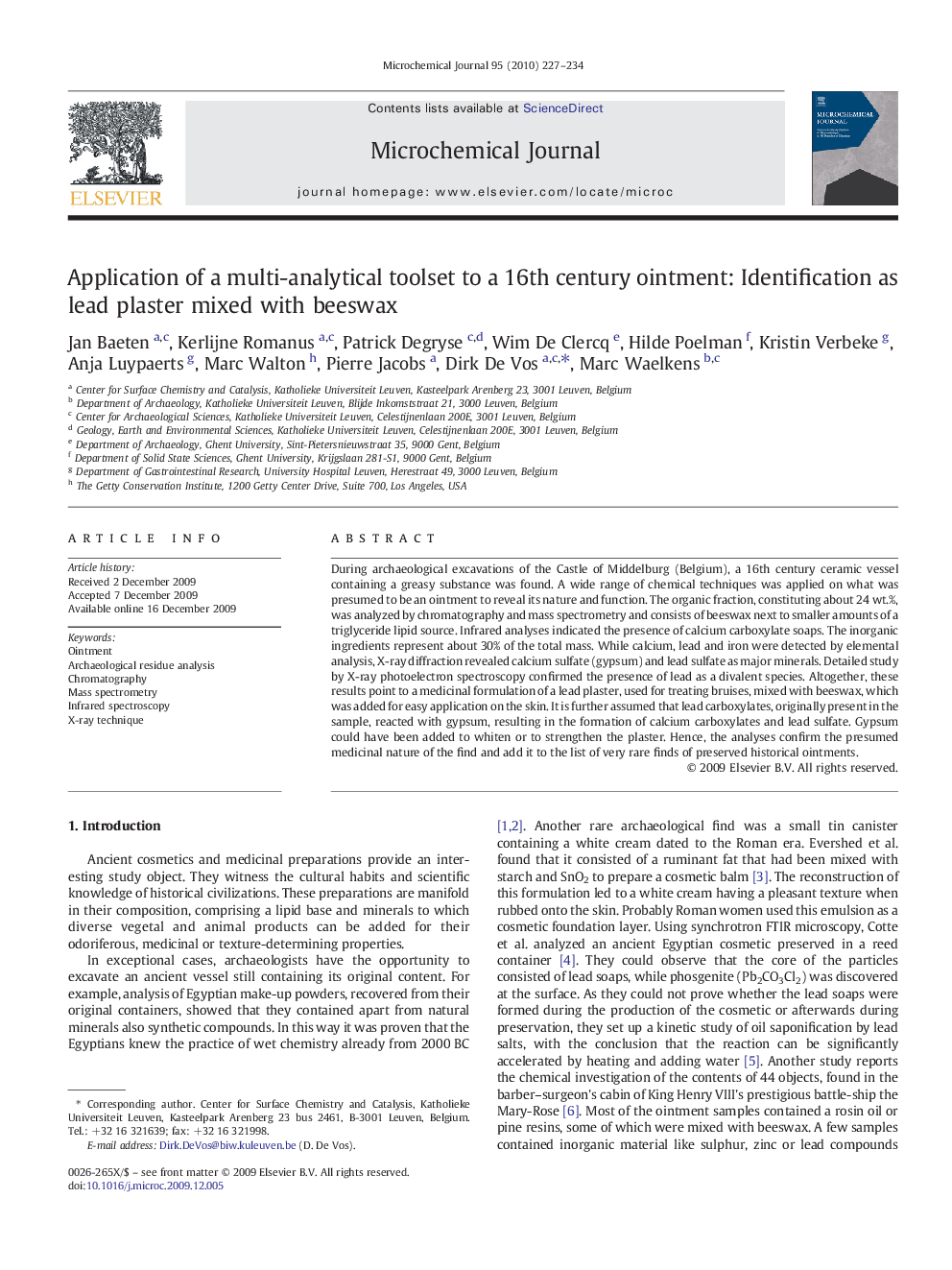| Article ID | Journal | Published Year | Pages | File Type |
|---|---|---|---|---|
| 1227973 | Microchemical Journal | 2010 | 8 Pages |
During archaeological excavations of the Castle of Middelburg (Belgium), a 16th century ceramic vessel containing a greasy substance was found. A wide range of chemical techniques was applied on what was presumed to be an ointment to reveal its nature and function. The organic fraction, constituting about 24 wt.%, was analyzed by chromatography and mass spectrometry and consists of beeswax next to smaller amounts of a triglyceride lipid source. Infrared analyses indicated the presence of calcium carboxylate soaps. The inorganic ingredients represent about 30% of the total mass. While calcium, lead and iron were detected by elemental analysis, X-ray diffraction revealed calcium sulfate (gypsum) and lead sulfate as major minerals. Detailed study by X-ray photoelectron spectroscopy confirmed the presence of lead as a divalent species. Altogether, these results point to a medicinal formulation of a lead plaster, used for treating bruises, mixed with beeswax, which was added for easy application on the skin. It is further assumed that lead carboxylates, originally present in the sample, reacted with gypsum, resulting in the formation of calcium carboxylates and lead sulfate. Gypsum could have been added to whiten or to strengthen the plaster. Hence, the analyses confirm the presumed medicinal nature of the find and add it to the list of very rare finds of preserved historical ointments.
